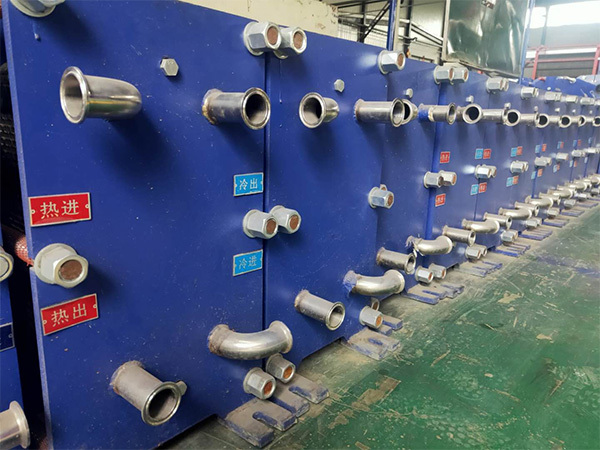Introduction to Shell and Tube Heat Exchangers, Come and Collect!
Release time:
2023-05-05 17:01
Source:
A shell and tube heat exchanger is a very common heat exchange device, composed of a shell, tube bundle, and fluid flow path. It is a commonly used mechanism in heat exchange equipment. Its characteristics are: one or more tube bundles are installed inside the shell, and there are two fluid flow paths in the tube bundle, with a heat exchange area in between. The fluid passes through the two flow paths of the tube bundle through the heat exchange area to achieve heat exchange.

Shell and tube heat exchangers have a wide range of uses, mainly used in liquid heat exchange, for oil-water cooling, liquid-gas heat exchange, liquid-vapor heat exchange systems. They are mainly used in heating, hot water supply, air conditioning, cooling, refrigeration, water treatment, chemical, power plants, petroleum, gas, steam power generation, and other industries for thermal energy conversion. They can also be used as a supplement to heat exchangers to reduce the floor space of the heat exchanger, improve heat exchange efficiency, and reduce energy consumption.
The uses of shell and tube heat exchangers are not limited to liquid heat exchange; they can also be used for hot water circulation heating and cooling systems to meet various requirements. In addition, shell and tube heat exchangers also play an important role in boilers, refrigerating machines, refrigerators, steam generators, generator sets, and automotive internal heat exchangers.
The advantages of shell and tube heat exchangers are their small footprint, light weight, high reliability, simple installation, easy maintenance, and labor-saving operation, meeting the heat exchange requirements of various liquids. The disadvantages are lower heat exchange efficiency and some noise, but the noise can be reduced through improvements.
Shell and tube heat exchangers have some special precautions. Adhering to these precautions during installation and use can more effectively utilize the performance of the shell and tube heat exchanger to achieve the desired heat exchange effect.
First, the installation of the shell and tube heat exchanger should be carried out according to the design requirements. The shell should be installed vertically, and the installation quality of the shell and tube bundle should be ensured to ensure the heat exchange effect. Second, when using a shell and tube heat exchanger, the piping should be installed according to the design and installation requirements to ensure the heat exchange effect. At the same time, the appropriate inlet and outlet flow rates should be ensured, and the installation should be correct to avoid heat exchange failures. The shell and tube heat exchanger should be inspected and maintained regularly to ensure its normal operation and safety and reliability.
Shell and tube heat exchangers are very common heat exchange equipment with a wide range of applications, including liquid heat exchange, hot water circulation heating, and cooling systems to meet various requirements. However, some special precautions should be noted during the installation and use of shell and tube heat exchangers to use them more effectively and achieve the desired heat exchange effect.
Related News

